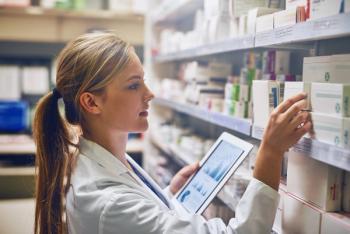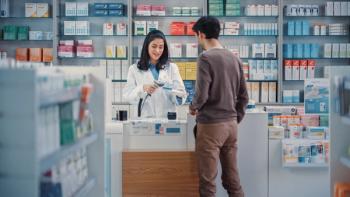
- Drug Topics September 2021
- Volume 165
- Issue 9
Boosting Confidence in CBD Counseling
How to discuss CBD and answer questions frequently asked by patients
Given the popularity of cannabidiol (CBD), patients are curious about this natural remedy, asking more questions than ever. We consulted 4 pharmacists knowledgeable about CBD for advice on counseling patients. Our experts are:
- Jesica Thomason Mills, PharmD, ND, MBA, RPh, owner of Owensboro Family Pharmacy and Wellness in Owensboro, Kentucky, and certified endocannabinoid specialist
- Elaine Richer, RPh, CEO of MyCureAll, based in Fair Lawn, New Jersey
- Becky Stillo, PharmD, owner of Alpine Apothecary in Whitefish, Montana
- Anne Henriksen, PharmD, owner of Malley’s Compounding Pharmacy in Richland, Washington
Our experts recommend that pharmacists advise patients to discuss CBD use with their health care providers before starting it. Here are some of the most frequently asked patient questions and our experts’ answers.
How does CBD work?
Mills: Patients will typically ask how CBD works and whether it will really help with pain, inflammation, [gastrointestinal] issues, anxiety, etc. We explain that CBD works by allowing the cannabinoids their body makes [eg, (anandamide) AEA and (2-arachidonoylglycerol) 2-AG] to stay in their body longer and that it helps to strengthen the endocannabinoid system [ECS]. The ECS is a system that functions to bring the body back into balance and to decrease inflammation. It reduces inflammation by decreasing proinflammatory chemicals (eg, cytokines and chemokines) and helping the immune system become better at recognizing what it should attack (ie, T-cell upregulation). If they have a symptom that is due to inflammation…it should help.
What product should I try?
Mills: As a pharmacist who is a certified endocannabinoid specialist, I love providing education and counseling my patients on the benefits and effective use of CBD. When a patient [is deciding] what product to try, I ask what they are interested in using it for. If they have pain in the wrist, elbow, or knee, or skin conditions, we will start using a balm or topical product. If they have pain in multiple joints, autoimmune conditions, inflammatory diseases, or mental health issues such as anxiety, I recommend using an oil or capsule.
Stillo: Match your intention with the application. Topical applications are great for localized support of your muscles and joints. Oral and under-the-tongue formulations are better for systemic absorption and support of your whole body. Supporting your sleep with CBD is a great way to start and then adjust when or if necessary.
What dose should I start with?
Mills: Patients often ask about the dose they should use, how long it takes to work, and how they should use it. I advise starting low and going slow. I recommend a starting dose of 15 mg once or twice daily, explaining that the timing of effectiveness typically depends on the state of their endocannabinoid system. If they have had illness or pain that the body has tried to bring back into balance for a while, it typically takes longer for the full benefit to show. I recommend [for the patient to try] the product for at least 10 days and to increase the dose every 3 days if needed. For oils and tinctures, I advise them to hold it under the tongue for at least 30 seconds, but 1 minute is usually best.
For capsules, I let them know that it takes longer for the effects to kick in, because they must wait for the stomach to empty. We discuss how oils have the fastest absorption rates, because there are a lot of blood vessels under the tongue. For my patients [who are] taking antacids, [proton pump inhibitors], have gastroparesis, or any condition of the gut that makes me question the intestinal permeability and function, I recommend the oils, because bioavailability will differ in edibles or capsules depending on how the gut is functioning.
How do I adjust the dose?
Stillo: Remind the patient to consult a professional when adjusting, because more is not always better. Switching up routes or sites may be more beneficial. Teaching patients to read and understand a label is also crucial. Product labeling isn’t always standard or clear, so advising consumers to pay attention and understanding things like mg per bottle vs mg per serving becomes important. Serving sizes can be listed as per ml or per dropperful, and those distinctions can make a difference and often lead to confusion with consumers.
Henriksen: More is not always better. Once someone has found an effective dose… taking more can either decrease the effect, increase [adverse] effects [AEs], or provide no further benefits. In my experience, most patients take between 10 and 40 mg daily in divided doses every 12 hours.
Is it safe to purchase CBD from anywhere?
Richer: I recommend that patients only purchase CBD from a reputable source, because some preparations can become contaminated with fungus, which may be especially harmful to patients with a compromised immune system. If the patient needs to take a drug test, [they] should always ask for the certificate of analysis when purchasing CBD to ensure the product is [tetrahydrocannabinol] THC free.
Stillo: Verify your product with the certificate of analysis, and never buy from a company that doesn’t provide lot-specific analysis that is conducted by a third-party lab.
Will CBD show up on a drug test?
Mills: I always ask the patient whether they are in a profession where they are drug tested or in pain management. If so, I recommend a product that is THC free. I always recommend THC-free CBD for children. We discuss that products can have the legal limit of THC, and although that amount will not cause any psychoactive [AEs], the urine test limit is so low that they can still fail a drug test for THC.
What are the most common AEs of CBD?
Henriksen: In my experience, the most common adverse events [AEs] of CBD are tiredness and drowsiness, dry mouth, dizziness and lightheadedness, and changes in appetite. I recommend taking the first dose in the evening and not doing anything else for the day until one knows how they respond to the CBD. We often forget that most accidents happen in the home. With any prescription, over-the-counter [OTC] medicine, or supplement that might affect cognition, I recommend that one does not do tasks around the house where they could hurt themselves afterward until they have adjusted to the medication.
Mills: We educate that the ECS is a different system than the central nervous system and that added sedation is not a concern. As far as CBD AEs, clinically we have had patients say they would become drowsy, which can be mitigated by decreasing the dose and checking the product to make sure it doesn’t have melatonin or other ingredients. We have had a few patients say the oil caused mild stomach discomfort, to which we suggest taking it with food and allowing it to sit under the tongue for 30 to 60 seconds.
What drugs interact with CBD?
Richer: CBD is a strong inhibitor of both cytochrome P450 3A4 (CYP3A4) and cytochrome P450 2D6 (CYP2D6). CBD may increase levels of:
- macrolide antibiotics (azithromycin, erythromycin, clarithromycin)
- calcium channel blockers (verapamil, diltiazem)
- benzodiazepines (lorazepam, diazepam, alprazolam, clonazepam)
- cyclosporine
- phosphodiesterase inhibitors
- erectile dysfunction drugs (sildenafil, tadalafil, vardenafil, avanafil)
- antihistamines
- haloperidol
- antiretrovirals
- certain statins (atorvastatin and simvastatin)
CYP2D6 metabolizes many antidepressants, so CBD may increase levels of these drugs in the patient’s body:
- selective serotonin reuptake inhibitors (citalopram, escitalopram, fluoxetine, fluvoxamine, paroxetine, sertraline)
- tricyclic antidepressants (amitriptyline, nortriptyline)
- antipsychotics
- β-blockers (atenolol, metoprolol, propranolol, bisoprolol)
Levels of opioids, such as oxycodone, codeine, hydrocodone, morphine, or tramadol, increase when CBD is introduced.
Henriksen: CBD can have potential drug interactions with prescription medications. Some of these drug interactions may cause increased AEs of either the medication or the CBD. Other times the drug interaction may cause an increased level of the medication or the CBD. It is vital for the patient to inform the pharmacist and medical provider about CBD usage. Another valuable tool for screening for drug interactions includes an interaction checker, such as on drugs.com, which helps screen for interactions between cannabis, CBD, and THC and prescription drugs.
Will CBD make me high?
Henriksen: Retail CBD comes from the hemp plant and has no high or psychoactive effect. When given with THC, CBD inhibits the psychoactive effects of THC.
Can CBD help multiple problems?
Mills: We counsel our patients that although CBD can help with a wide variety of symptoms, it may not be their miracle or silver bullet and solve every problem they have. It can help decrease inflammation, but the source of the inflammation is the root cause, and we should work to correct the source.
Richer: As medical professionals, it is very important to ensure collaboration with other caretakers of the patient. Informed and shared decision-making is a must. We need to ensure ongoing monitoring and adapting the treatment plan as needed.
Karen Berger, PharmD, graduated from the University of Pittsburgh School of Pharmacy, and her experience includes chain and independent pharmacy as well as medical writing and reviewing.
Articles in this issue
about 4 years ago
Acne Treatment Meets End Points in Studyabout 4 years ago
Selling CBD in the Pharmacyabout 4 years ago
Build a Successful Hospital Pharmacy Analytics Programabout 4 years ago
Why Pharmacists Are Stressed Out, and How to Improve Self-careabout 4 years ago
Getting Patients Immunized Against Pneumonia Is Importantabout 4 years ago
CBD Legislation Remains in Limboover 4 years ago
Artificial Intelligence Has Come in Wavesover 4 years ago
Ovarian Cancer Treatment Update and Pharmacists' Roleover 4 years ago
Biden Pushes for Lower Drug Prices in an Executive OrderNewsletter
Pharmacy practice is always changing. Stay ahead of the curve with the Drug Topics newsletter and get the latest drug information, industry trends, and patient care tips.





























































































































